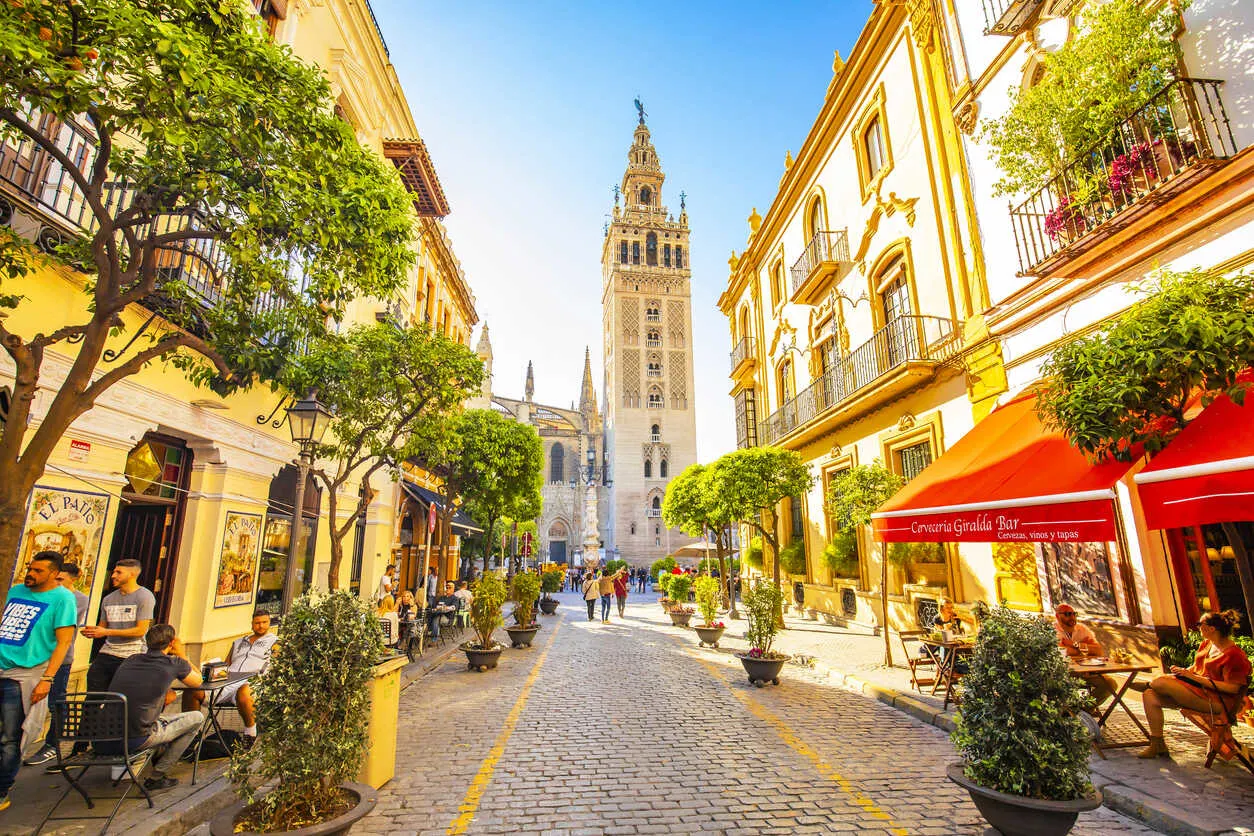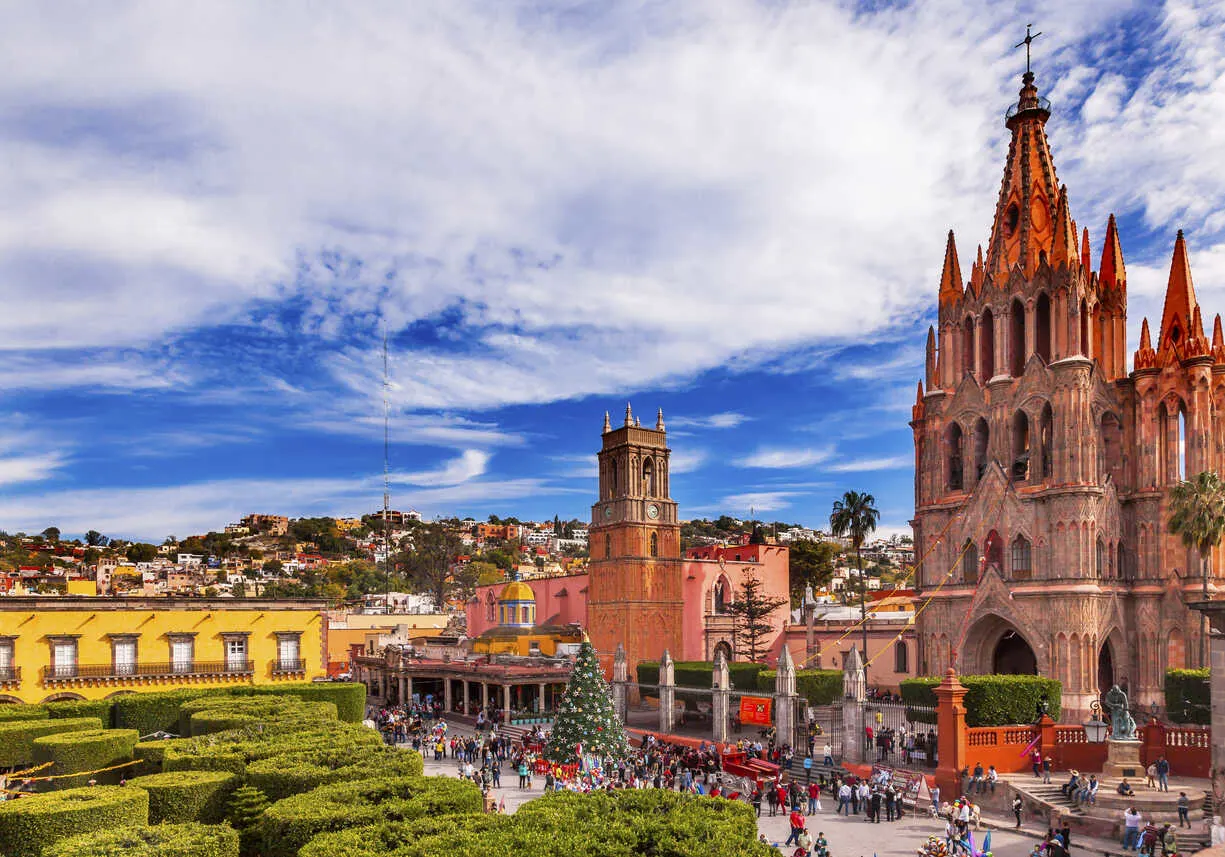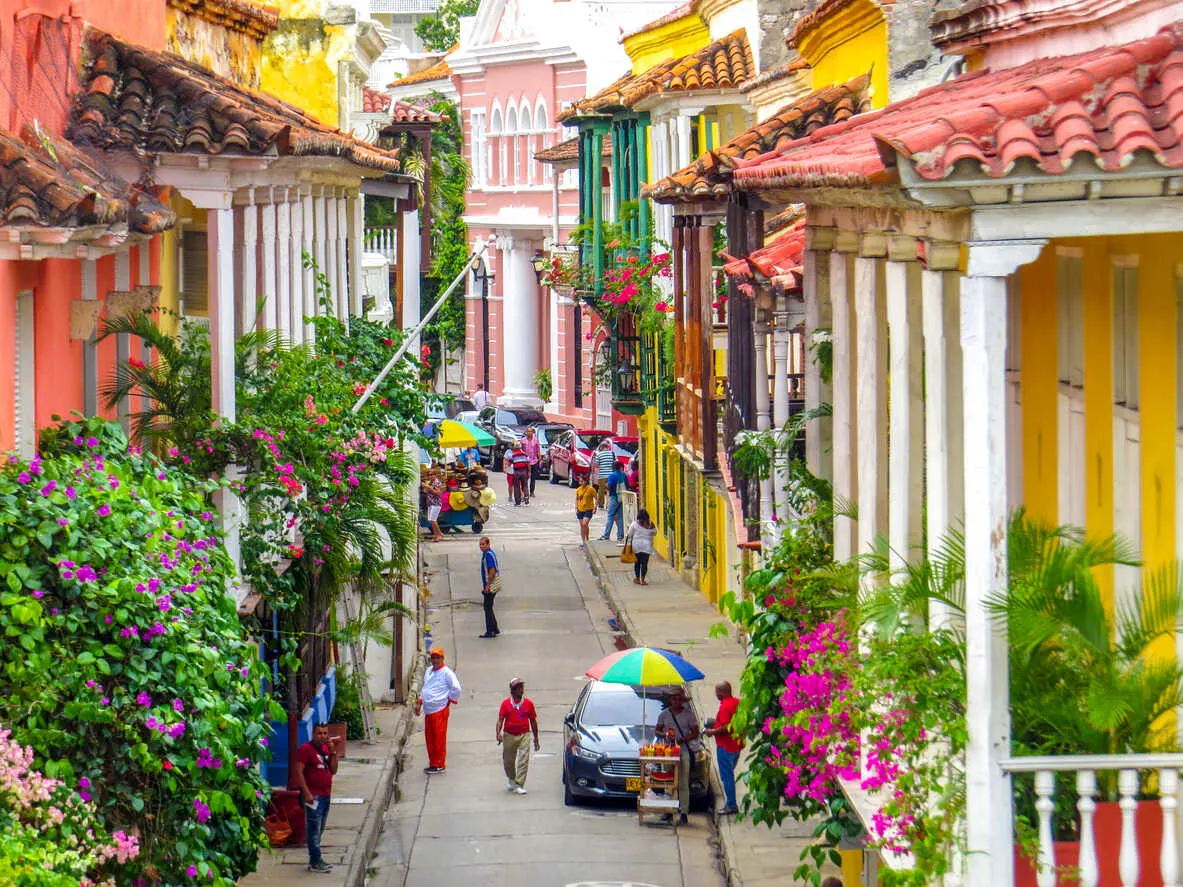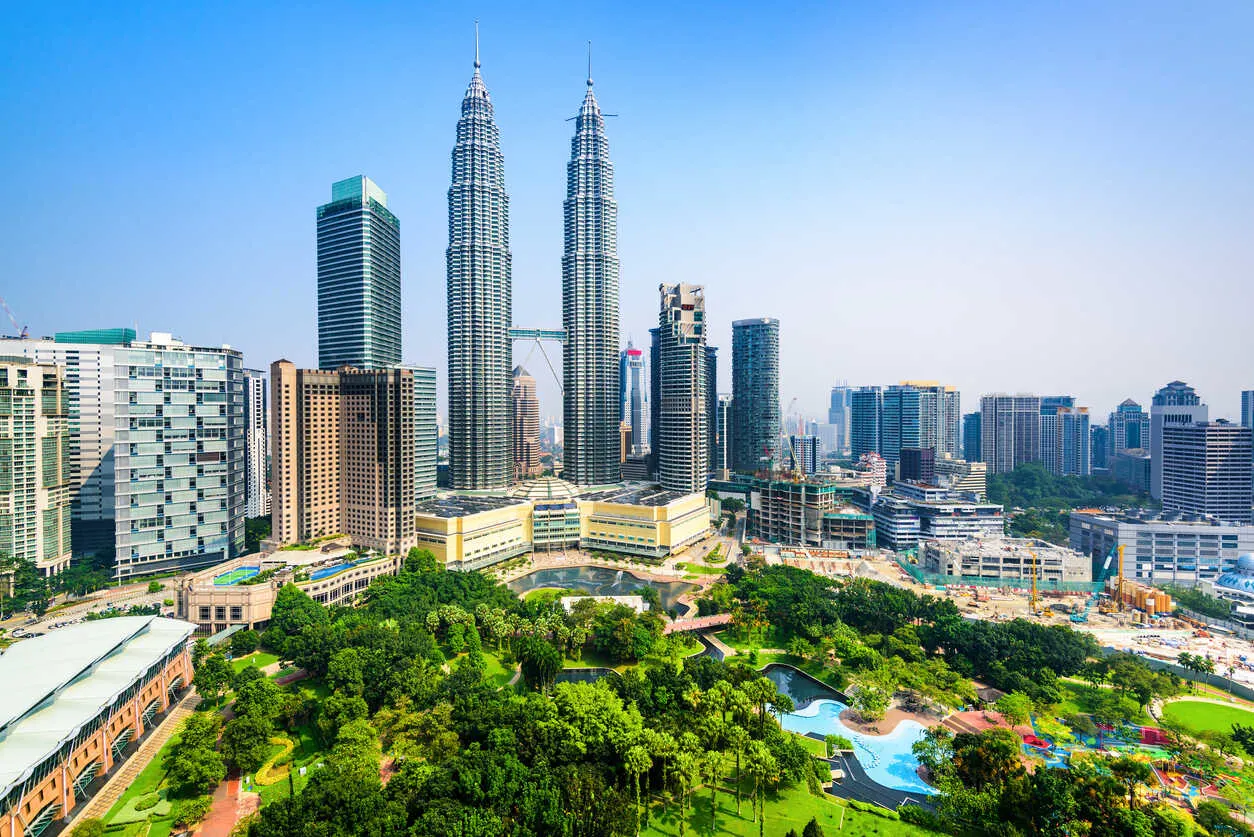For many years, it was mostly retirees who had the flexibility to move abroad of their own volition, without a job on the ground—they could stretch their savings and live out their golden years in comfort. However, recently, a new demographic has begun to explore life overseas: individuals aged 35 to 45. This shift reflects broader changes in work culture, as remote work and flexible schedules make it easier to pursue international living while maintaining a career.
What’s driving this exodus? Many mid-career professionals and young families are seeking a better work-life balance, more affordable living, access to quality healthcare, and educational opportunities for their children. They’re not looking for a backpacker’s adventure or the transient lifestyle of a digital nomad. Instead, they’re focused on building a stable, fulfilling life in a new country, where they can still advance their careers or businesses while offering their families a rich cultural experience.
Here, we explore five countries that cater to this growing demographic, offering an ideal blend of lifestyle, affordability, and opportunity.
How To Move Out of the U.S.
How To Move Out of the U.S.
The policy implications of the last election impacted your retirement funds, taxes, healthcare, and more. But you can protect yourself, your family, your future. In lots of safe, warm, friendly spots abroad, you can live comfortably on a budget from $2,000-$3,800 a month (all-in—housing and extras included). We’ll show you how—and where—to go.

By submitting your email address, you will receive a free subscription to IL Postcards and special offers from International Living and our affiliates. You can unsubscribe at any time, and we encourage you to read more about our Privacy Policy.
Portugal

Portugal has long been a favorite among retirees, but it’s now attracting younger professionals and families in increasing numbers. This scenic gem offers a unique mix of Old World charm and modern convenience, making it a top choice for those seeking a balanced lifestyle. Whether you’re captivated by Lisbon’s historic cobblestone streets or the golden beaches of the Algarve, Portugal offers a laid-back pace that prioritizes personal well-being.
The recent U.S. election results show that many Americans are considering life abroad, with Portugal high on the list. “Portugal’s new Digital Nomad Visa, the D8, allows younger people who still need to work to enjoy a more affordable, safer life,” says Terry Coles. “With affordable healthcare, welcoming people, and easy access to the rest of Europe, it’s an attractive option. Plus, Portugal and the U.S. have a tax treaty that prevents double taxation, so you can work remotely with ease.”
One of the country’s biggest draws is its cost of living. Outside of major cities, expenses are significantly lower than in other Western European nations. Imagine renting a three-bedroom countryside home for just €800 a month. Utilities and groceries are also budget-friendly, providing excellent value without compromising on quality.
Portugal’s healthcare system is another standout. Coles explains, “Public healthcare is affordable and efficient, and private care is accessible, with many professionals trained abroad.”
For families, Portugal’s education system offers a clear advantage. “Families who move to Portugal with children are surprised that public schools here are more challenging than U.S. schools,” Coles says. “They typically run two years ahead of their U.S. counterparts.” Portuguese high schools guide students toward career paths, preparing them for the job market. Unlike in the U.S., schools here focus mainly on academics, with little time devoted to extracurricular activities.
Private and international schools also offer excellent options, though they come with a higher price tag. “Some private schools follow a British curriculum entirely in English, with Portuguese and other languages as electives,” adds Coles.
Young children adapt quickly. “Families find that kids pick up the language in no time and even help their parents navigate daily life until they become fluent,” says Coles.
Portugal consistently ranks as one of the world’s safest countries. “Violent crime is almost unheard of here, which is one of the reasons it ranks so highly on the Global Peace Index,” says Coles.
Spain

Spain is a land of contrasts, offering something for everyone. Its vibrant cities pulse with energy, from the architectural wonders of Barcelona to Madrid’s bustling cultural scene. For those seeking tranquility, the coastal towns and rural villages provide a slower, more peaceful pace of life. This diversity allows expatriates to find a lifestyle that suits their needs, whether it’s the buzz of urban living or the serenity of countryside retreats.
The Spanish way of life is famously laid-back. Long lunches, late dinners, and weekends spent with family and friends foster a natural balance between work and personal life. While cities like Madrid can be pricey, many smaller towns and coastal regions offer a more affordable lifestyle without sacrificing modern amenities.
According to Cepee Tabibian, founder of She Hit Refresh, Spain’s appeal to expats has grown significantly. “I’m definitely seeing this! I’m in the middle of running my signature training on how to move abroad, and this time, attendance has increased by more than 500% compared to usual!” she says.
For those in their 30s and 40s, Spain offers unique opportunities. “Spain recently launched their Digital Nomad Visa (DNV) in 2023,” Cepee explains. “This visa allows remote workers to live in Spain while working for a company located outside of the country. It’s an attractive option for remote workers who might not otherwise have the opportunity to live and work here.”
Spain’s affordability is another major draw. “Compared to other Western European countries, Spain has a lower cost of living, even in cities like Madrid and Barcelona,” says Cepee. However, she notes that housing costs have increased by 10%-20% in the past year, presenting challenges for locals even as expats find the prices appealing.
Cepee also highlights a growing trend: “More single, child-free women in their 30s and 40s are moving to Spain. It has one of the lowest birth rates in Europe, making it a place where not having children is quite normal.”
For Cepee, moving to Spain was a transformative experience. “When I got back to Austin, all I could think about was Spain. At 35, I had doubts—was I too old to move abroad? What would I do there? But the pull became stronger, and within a year, I packed my bags, quit my job, rented my condo, and moved to Madrid on my own.”
The move opened doors she hadn’t imagined. “Specifically, when I moved to Spain, I started having all these bizarre and creative ideas. I began blogging and organizing monthly in-person events, eventually founding She Hit Refresh, a community-based business with over 13,000 members that teaches women 30 years and over how to move abroad,” Cepee shares.
“In Spain, I’ve found not only freedom but fearlessness—the courage to defy the status quo and chart my course. Here, I’m more willing to take risks and choose who I want to be than in the U.S.”
Spain’s healthcare system is another major draw. Residents benefit from universal healthcare, with public hospitals offering top-tier services at little to no cost. For those who prefer shorter wait times, private healthcare is an excellent option and remains reasonably priced. Both systems are staffed by highly trained professionals, ensuring quality care across the board.
Cepee’s advice for anyone considering a move abroad? “What do you have to lose? Less than you think. If you’re worried about leaving your comfortable lifestyle in the U.S., it will be there if you ever want to move back. Houses, cars, jobs—those are replaceable. But the years you spend wondering instead of doing? They are not. Take the leap and make your dream come true.”
How To Move Out of the U.S.
How To Move Out of the U.S.
The policy implications of the last election impacted your retirement funds, taxes, healthcare, and more. But you can protect yourself, your family, your future. In lots of safe, warm, friendly spots abroad, you can live comfortably on a budget from $2,000-$3,800 a month (all-in—housing and extras included). We’ll show you how—and where—to go.

By submitting your email address, you will receive a free subscription to IL Postcards and special offers from International Living and our affiliates. You can unsubscribe at any time, and we encourage you to read more about our Privacy Policy.
Mexico

For North Americans seeking a new life abroad, Mexico stands out as a natural choice. Its close proximity to the U.S. and Canada, combined with a vibrant culture and low cost of living, make it an attractive destination. The country’s diverse regions cater to a wide range of lifestyles, from the cosmopolitan buzz of Mexico City or Merida to the laid-back beaches of the Riviera Maya. Many expats gravitate toward smaller towns and cities like San Miguel de Allende or Puerto Vallarta, which offer a rich cultural heritage and a tight-knit sense of community.
“It’s the culture for me,” says Addy Eubanks. “I’ve never felt so warmly welcomed by another community before. The buenos días in the mornings, the provecho at meals—the hospitality here is top notch.”
Jen Hill agrees. “We came here on vacation, and we loved it. It was an easy step from the U.S. Many people speak English.”
For artist Bobbi Goddard, Mexico is more than a new home—it’s her “soul place.” “Culturally, and food culture is included, this is my soul place. Mexico holds bold ideas with gentle hands.”
Life in Mexico offers a refreshing balance between work and leisure. “The work-life balance is better, the travel time ‘home’ is better, and the food is delectable,” says Star James. “I moved in 2017, and I can’t imagine going back to live when this home has so much cultural life to share.”
Expats like Miranda Mortimer have found that Mexico provides opportunities that simply aren’t available back home. “Living in Vallarta gives us a rich community we never had in Seattle. We’re raising our son to be bilingual and bicultural, and we have a work-life balance we would have never achieved stuck in Seattle traffic,” she explains. “Running a business here, we’re part of a growing craft beer market, unlike the often-oversaturated markets in the U.S.”
The cost of living in Mexico is significantly lower than in the U.S., allowing many expats to live comfortably on a modest income. “As an artist, living in a place where the cost of living is low means I can focus on my craft rather than hustling night and day to pay bills,” says Goddard. “If I was home, I’d never be working this much. Here, I can perform every day or even twice a day because there’s a real appetite for live music and entertainment.”
Housing, in particular, is affordable, with spacious homes available at a fraction of U.S. prices. This affordability makes it possible for expats to enjoy a comfortable lifestyle, complete with modern amenities and cultural richness.
Mexico is also a fantastic place to raise a family. “Our friend says that people in Mexico react to children the way people in the U.S. react to dogs,” laughs Megan Gallagher. “There’s a true respect and love for childhood here, and our children are warmly welcomed wherever we go. Raising bilingual and bicultural children is very important to us.”
Mortimer echoes this sentiment, emphasizing the benefits of raising her son in Vallarta. “The community here makes a huge difference. It’s a nurturing environment for children to grow up bilingual and bicultural,” she says.
Healthcare in Mexico is another highlight. The public IMSS system offers basic care at minimal cost, while private healthcare rivals U.S. standards at a fraction of the price. Expats benefit from high-quality facilities and English-speaking professionals, ensuring a seamless healthcare experience.
Whether you’re seeking the excitement of urban life, the tranquility of beachside living, or the charm of a historic town, Mexico offers something for everyone. “Mexico is vibrant and alive,” says James. Its mix of modern conveniences and traditional warmth makes it an ideal destination for those looking to reinvent their lives abroad.
Colombia

Colombia is swiftly becoming a top destination for expatriates drawn to its blend of modern amenities and stunning natural landscapes. Medellín, known as the “City of Eternal Spring,” boasts a perfect spring-like year-round climate and a growing expat community. Over the past two decades, the city has undergone a remarkable transformation, evolving into a hub for innovation, culture, and connectivity. Its vibrant neighborhoods, world-class dining, and thriving art scene offer a dynamic lifestyle for newcomers.
Colombia offers exceptional value to those keeping an eye on their budget. In Medellín, a couple can comfortably live on $1,500 to $2,000 a month, covering housing, utilities, groceries, and leisure activities. The city’s efficient and affordable metro system makes getting around easy, further enhancing its appeal for urban living.
Erin Donaldson, an expat living in Colombia, shares her journey: “My South American adventure started at 27 when I decided to teach abroad. Originally, I planned to go to Peru, but I ended up in Colombia after finding a better opportunity. When I arrived in 2012, the country was entering a new era of safety and stability, and it felt like the perfect place for a fresh start.”
Colombia’s healthcare system is another highlight, consistently ranking among the best in Latin America. With modern facilities and highly trained professionals, both public and private options offer quality care at a fraction of U.S. costs. Many expats opt for private healthcare for shorter wait times, but even public services deliver excellent standards of care.
Donaldson emphasizes Colombia’s appeal to Digital Nomads: “The ability to earn in dollars while living in pesos has been a game changer. Many of us are starting entrepreneurial projects alongside our main jobs, helping to boost local economies. Personally, my income here supports my two Colombian-born sons and my mother. We live an upper-middle-class lifestyle, debt-free, something I couldn’t have imagined back in the States.”
Families considering a move will find Colombia to be a welcoming environment. Major cities like Bogotá, Medellín, Pereira, and Bucaramanga offer a range of opportunities and unique cultural flavors. “For families with small children, it’s easy to build connections through schools, sports, or community groups,” says Donaldson. “My family is deeply integrated here, and it’s been rewarding to see my sons grow up bilingual and bicultural.”
Whether you’re seeking a vibrant urban experience or a tranquil setting in the Andes, Colombia offers a wealth of options. From its friendly locals and affordable cost of living to its rich cultural heritage, Colombia continues to prove itself as an ideal destination for those ready to embrace life abroad.
Malaysia

Malaysia stands out as one of Southeast Asia’s most expat-friendly countries. Its multicultural society, excellent infrastructure, and affordable living make it an ideal destination for families and professionals alike. Popular hubs like Kuala Lumpur and Penang offer a perfect blend of urban convenience and cultural depth, attracting expatriates from around the world.
Keith Hockton, an expat and expert on living in Malaysia, highlights its appeal: “Malaysia is an amazing choice for expats in their 30s and 40s. It’s affordable, full of opportunities, and has a lifestyle that feels like an upgrade. You can live in a modern condo with a pool, eat out often, and still have money left over for travel or savings. Healthcare here is top-notch and surprisingly affordable, and if you’ve got kids, the international schools are some of the best you’ll find, with world-class curriculums.”
The cost of living in Malaysia is remarkably low. Families can secure spacious, modern apartments in city centers for under $1,200 a month, while utilities and groceries are similarly budget-friendly. Malaysia’s healthcare system, recognized for its high standards, offers both public and private options at a fraction of Western costs. “Add to that a laid-back work-life balance and endless things to explore—from tropical islands to bustling night markets—and it’s a place where life just feels easier and more exciting,” Hockton adds.
What truly sets Malaysia apart is its diversity and welcoming atmosphere. “You’ve got a mix of cultures—Malay, Chinese, Indian, and us—all blending into this vibrant, friendly vibe,” says Hockton. “English is widely spoken, so settling in is a breeze, and you’ll feel at home quickly.” The country’s strategic location also makes it a gateway to Southeast Asia, with quick, affordable flights to Bali, Bangkok, or Singapore, perfect for weekend getaways.
Whether you’re seeking career opportunities, a fresh start, or a family-friendly environment, Malaysia delivers on all fronts. Its combination of affordability, cultural richness, and modern convenience makes it a compelling choice for expats ready to embrace life in Asia.
These countries—Portugal, Spain, Mexico, Colombia, and Malaysia—each provide unique advantages. For 35 to 45-year-olds seeking a better quality of life abroad, they offer the chance to enjoy new cultures, a more balanced lifestyle, and a fulfilling experience tailored to their aspirations.
How To Move Out of the U.S.
How To Move Out of the U.S.
The policy implications of the last election impacted your retirement funds, taxes, healthcare, and more. But you can protect yourself, your family, your future. In lots of safe, warm, friendly spots abroad, you can live comfortably on a budget from $2,000-$3,800 a month (all-in—housing and extras included). We’ll show you how—and where—to go.

By submitting your email address, you will receive a free subscription to IL Postcards and special offers from International Living and our affiliates. You can unsubscribe at any time, and we encourage you to read more about our Privacy Policy.
